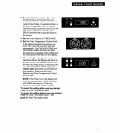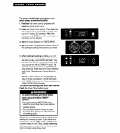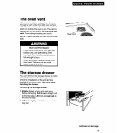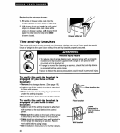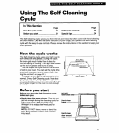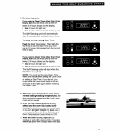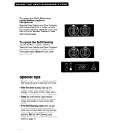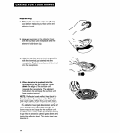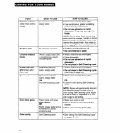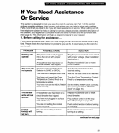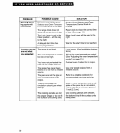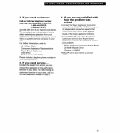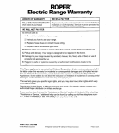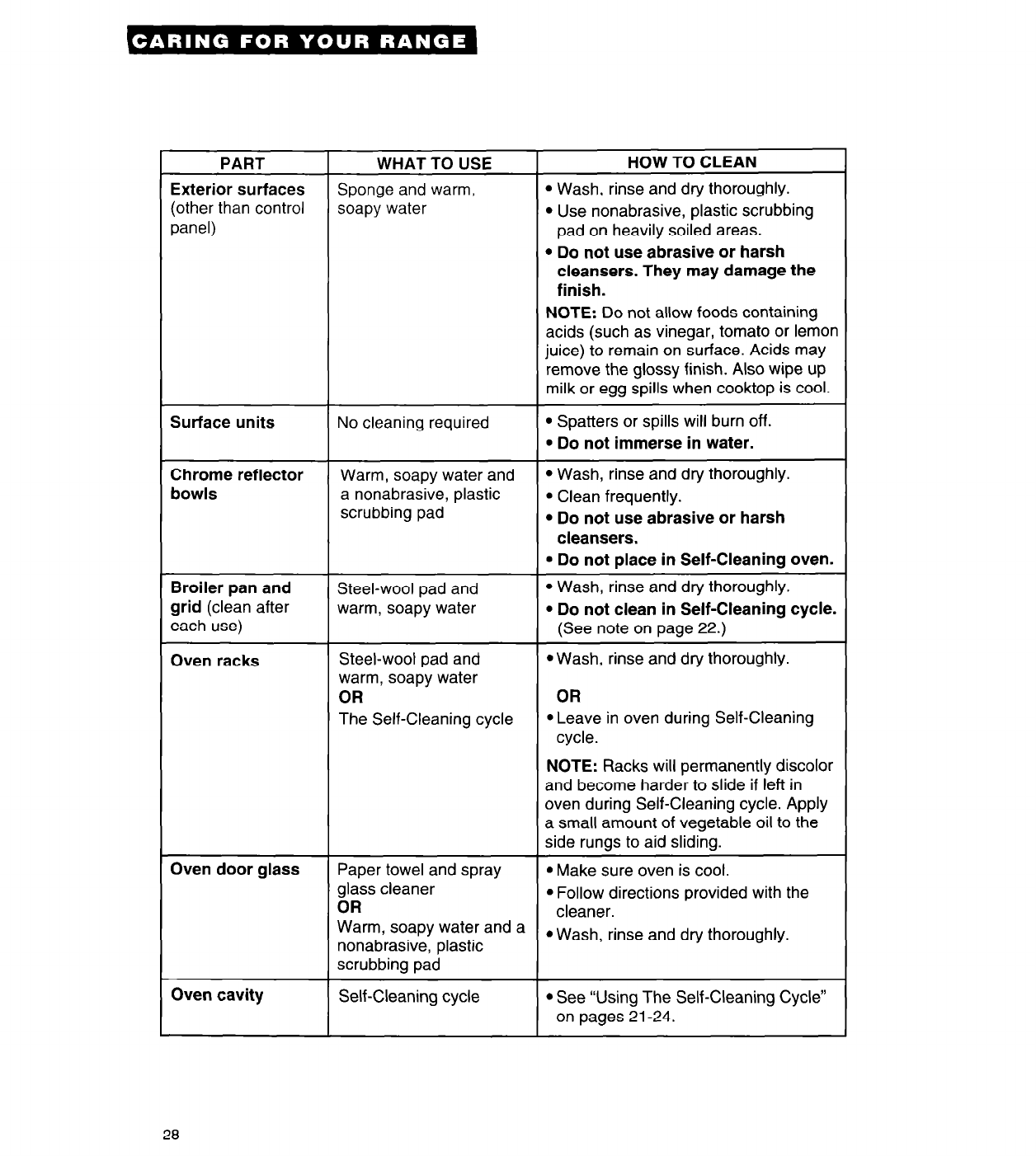
PART
I WHAT TO USE I
HOW TO CLEAN
. ._...
_ _ . ._ . . . - _ _ _
Exterior surfaces Sponge and warm,
l Wash, rinse and dry thoroughly.
(other than control soapy water
l Use nonabrasive, plastic scrubbing
panel)
pad on heavily soiled areas.
l Do not use abrasive or harsh
cleansers. They may damage the
finish.
NOTE: Do not allow foods containing
acids (such as vinegar, tomato or lemon
juice) to remain on surface. Acids may
remove the glossy finish. Also wipe up
milk or egg spills when cooktop is cool.
Surface units No cleaning required
l Spatters or spills will burn off.
l Do not immerse in water.
Chrome reflector
bowls
Warm, soapy water and
a nonabrasive, plastic
scrubbing pad
l Wash, rinse and dry thoroughly.
l Clean frequently.
l Do not use abrasive or harsh
cleansers.
Broiler pan and
grid (clean after
each use)
Oven racks
Steel-wool pad and
warm, soapy water
Steel-wool pad and
warm, soapy water
OR
The Self-Cleaning cycle
l Do not place in Self-Cleaning oven.
l Wash, rinse and dry thoroughly.
l Do not clean in Self-Cleaning cycle.
(See note on page 22.)
l Wash, rinse and dry thoroughly.
OR
l Leave in oven during Self-Cleaning
cycle.
Oven door glass Paper towel and spray
glass cleaner
OR
NOTE: Racks will permanently discolor
and become harder to slide if left in
oven during Self-Cleaning cycle. Apply
a small amount of vegetable oil to the
side rungs to aid sliding.
. Make sure oven is cool.
l Follow directions provided with the
cleaner.
Oven cavity
Warm9 ‘Oapy water and a
nonabrasive, plastic
l Wash, rinse and dry thoroughly.
scrubbing pad
Self-Cleaning cycle
l See “Using The Self-Cleaning Cycle”
on pages 21-24.
28



